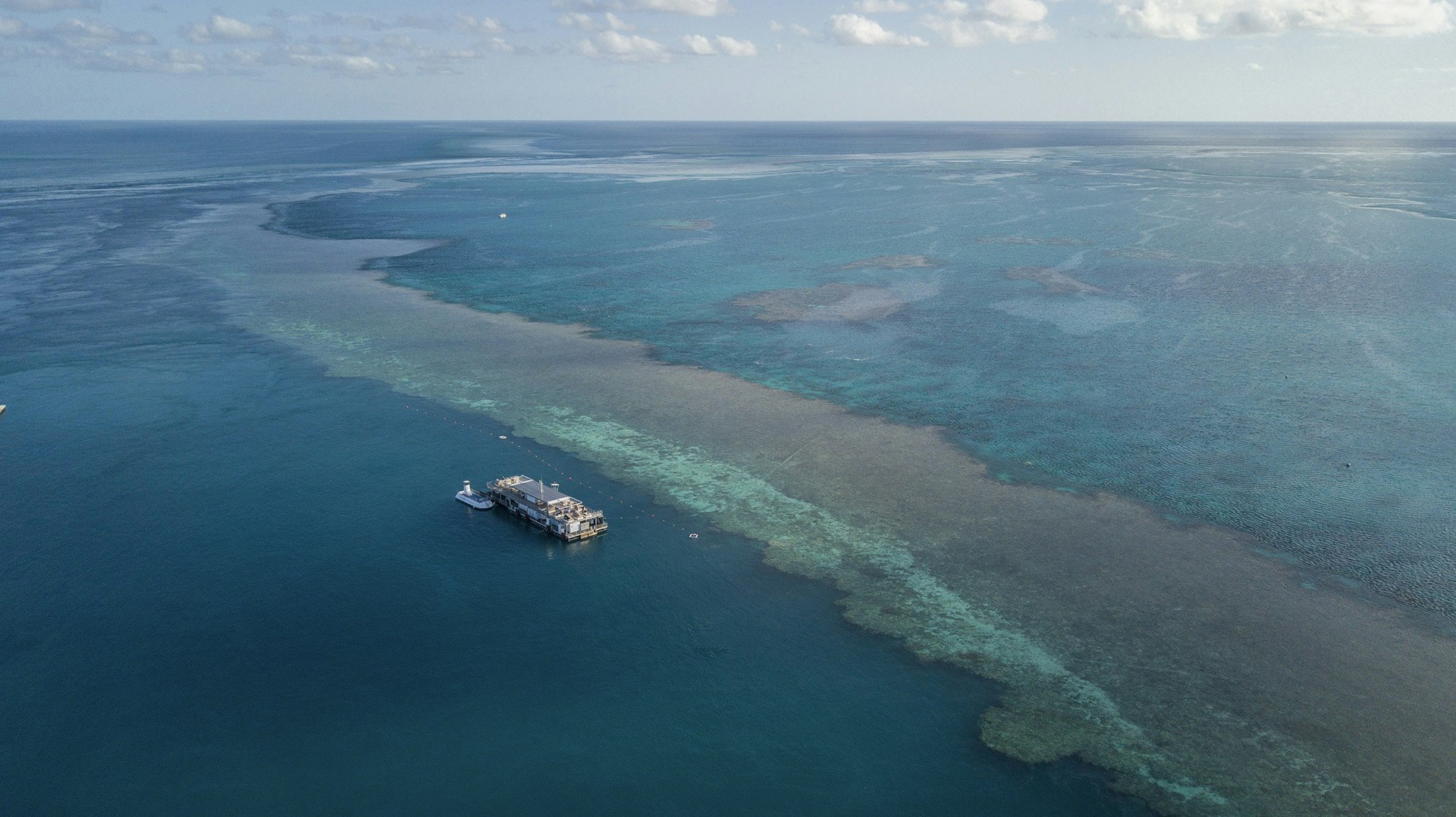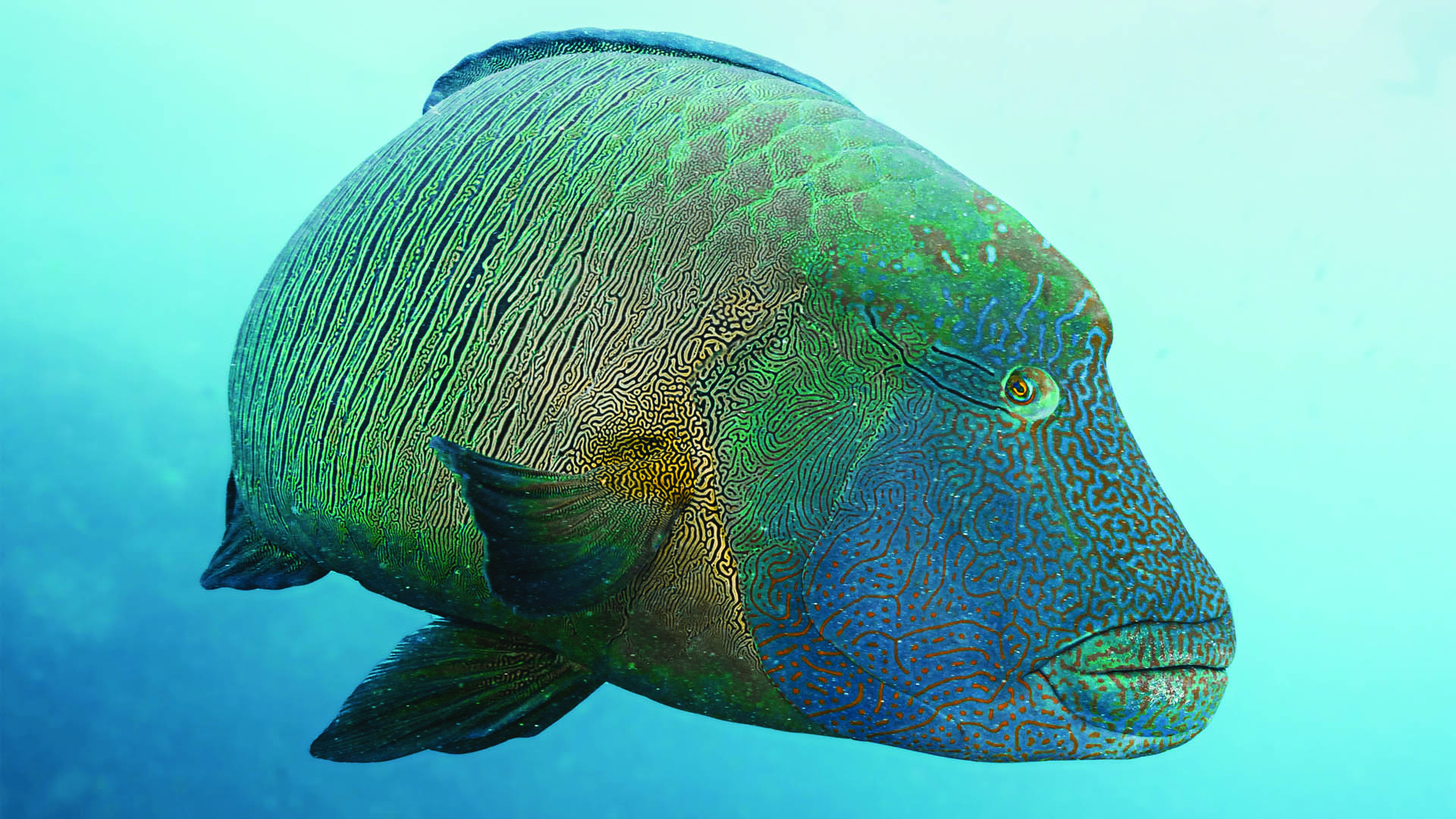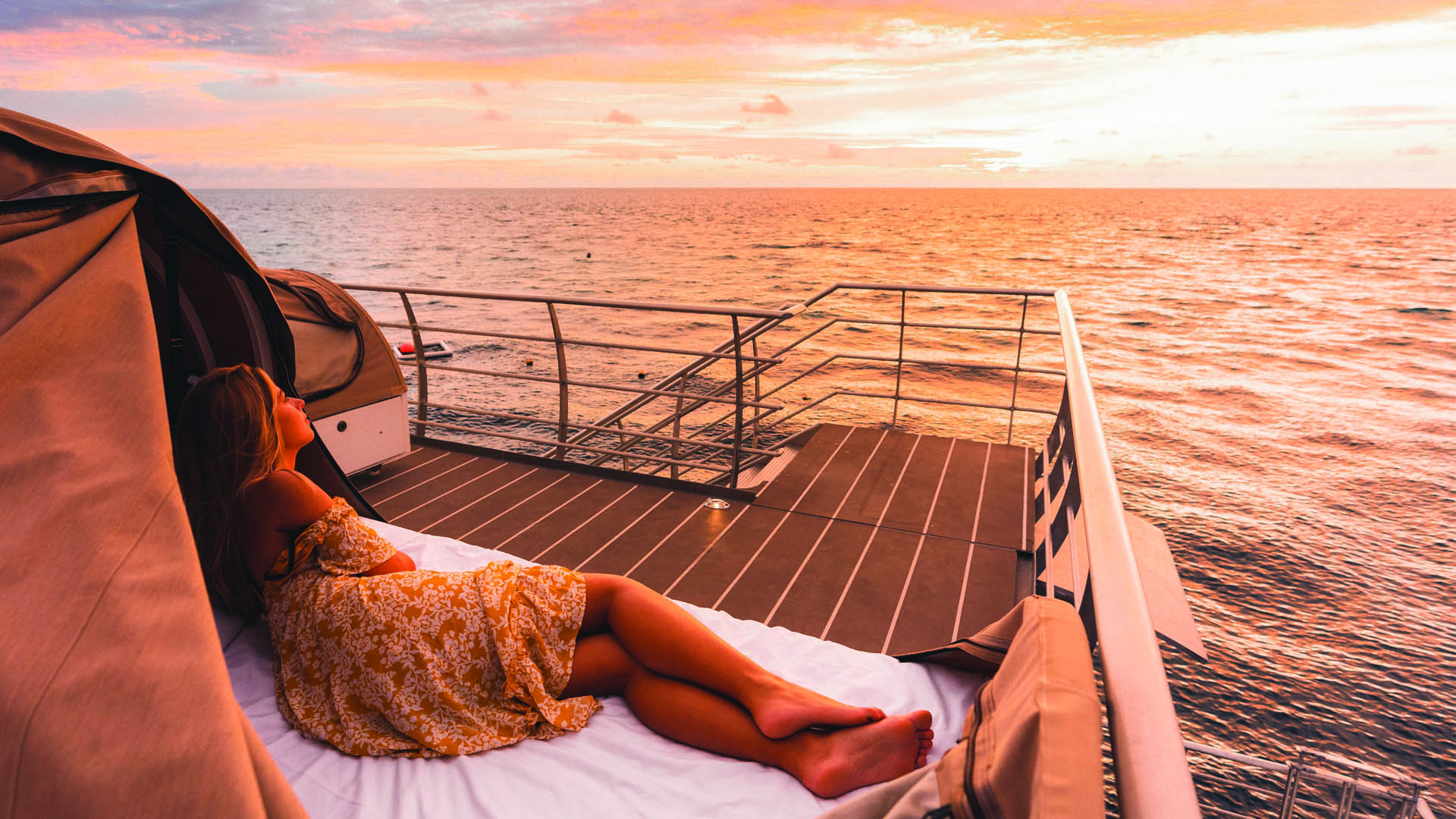

It’s early morning at Hardy Reef, but the first thing you see is not the sunrise, rather a manta ray gliding by. It holds eye contact for the briefest of seconds, then glides away to join a flurry of iridescent damselfish. A parrotfish puckers up to the glass separating you from the Coral Sea, and then a turtle bobs by, completely unfazed by your presence.
After just 10 minutes of such marine action, most people would go home with goosebumps – and a full SD card. But this is just the start of your Reefsleep adventure on the Great Barrier Reef. Eighty kilometres off the coast of Airlie Beach in Tropical North Queensland, Hardy Reef will spoil you for snorkelling and diving forever. The waters here are calm, even on blustery days, thanks to the protected position on the outer Great Barrier Reef. And they remain warm even in winter, with average temperatures hovering around 23˚C – it doesn’t deviate much from the air temperature.

Australia’s cooler months from May through November also attract a spectacular array of fish to the reef, from trevally and coral trout to snapper, giant Maori wrasse, slipper lobsters and the two-metre-long giant Queensland grouper. You only need a snorkel and mask to become part of the action – much of it is close to the surface. But should you dive a little deeper, you’ll find turtles, reef sharks and barracuda, among other species. Thanks to your base at the Reefworld pontoon, you can even stay dry while discovering this underwater menagerie. The pontoon invites day-trippers to cruise out from Airlie Beach – on the look-out for migrating whales between July and September – and to set up base for a few hours of snorkelling and diving. When the boat returns to the mainland in the afternoon, a lucky few are left to enjoy the last of the day over bubbles and dinner. Between 5.30pm and 6.30pm, depending on the dry season month, the sky transforms into an artist’s palette of tropical colours, the sunset fading into Whitsundays water with a spectacular sizzle.
Then it’s the Milky Way’s time to shine – with no light pollution for countless nautical miles, the only thing between you and a spray of stars is your blanket, should you opt to spend the night on the pontoon’s upper deck in Reefbeds. Otherwise, retreat to your underwater, glass-encased Reefsuite – the first of their kind in the country – to resume this morning’s front-row seating, this time to gaze on Hardy’s nocturnal animals.
Having nested on islands over the warmer months, baby turtles begin to flipper through the Coral Sea from March, and you may even see them drifting along at night. Mantas swarm in particularly large numbers from May through August, and 30,000 whales migrate through these waters every year to breed and take care of their young. While you probably won’t spot them after the lights go out, you may well hear them. Imagine being lulled to sleep by whale song…

Explore more stories like this one in our Beyond Magazine. Download or request your copy today at www.journeybeyond.com/inspiration/journey-beyond-magazines/
Sign up to receive our e-newsletters featuring the latest news, exclusive offers and much more from Cruise Whitsundays and Journey Beyond.